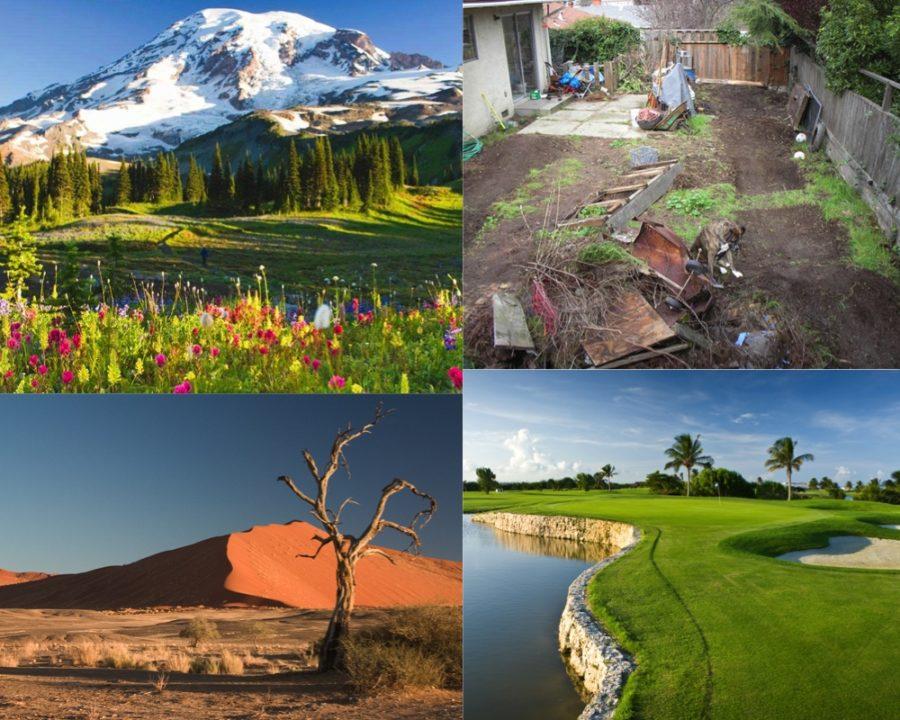Global Fest: Kick Some Grass
When we hear the word beauty, our minds often naturally skip to physical human appearances, passing over the idea of beauty of landscape. In the 2016 Global Fest seminar “Kick Some Grass” on Monday, March 8, students had the unique opportunity, according to Mr. Sidman, to “explore the history of the ideals of the lawn and landscape and how this differs between cultures.” The seminar began with about 50 landscapes spread across the room, with photographs ranging from under construction backyards to scrubby deserts to golf courses to mountain ranges. Each student decided the landscape to be beautiful or ugly – a green dot representing beautiful and a red representing ugly – with many of the landscapes ending controversially. This caused the students to realize that although beauty is a somewhat agreeable concept, beauty can depend on the viewer’s morals, cultural background, and past experiences.
The seminar then continued to examine the history and evolution of the lawn more specifically. When everyday resources weren’t as accessible, the lawn originated for functional uses, including a space to grow crops and raise animals. As time passed, and basic resources became more available, the green lawn evolved to a status symbol, meaning that the more property one owned, the wealthier and more stable you were. Eventually, the expansive, lush grass became less groundbreaking and more usual in everyday homes. Because the first decorative lawns originated in Western Europe, where rain is plentiful, water resources had not been an issue. However, as the trend spread across the world to varying climates, water resources became scarce and more complications unfolded. Even though the maintenance of the modern lawn depletes our already low water sources, it is still a common societal practice, and most likely will continue to be in the future. Students left the seminar with a broader idea of natural beauty and how our everyday expectations of the lawn came to be, and were opened to just another aspect of the world’s beauty.


